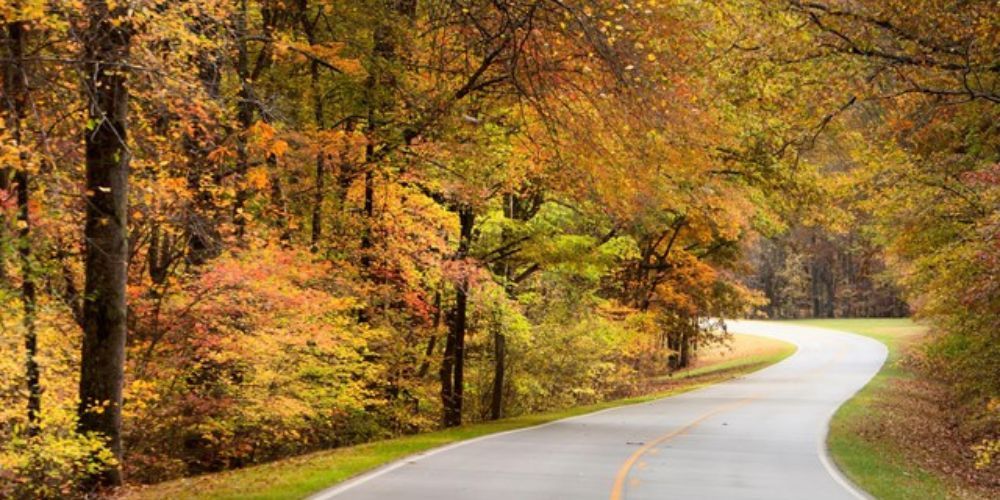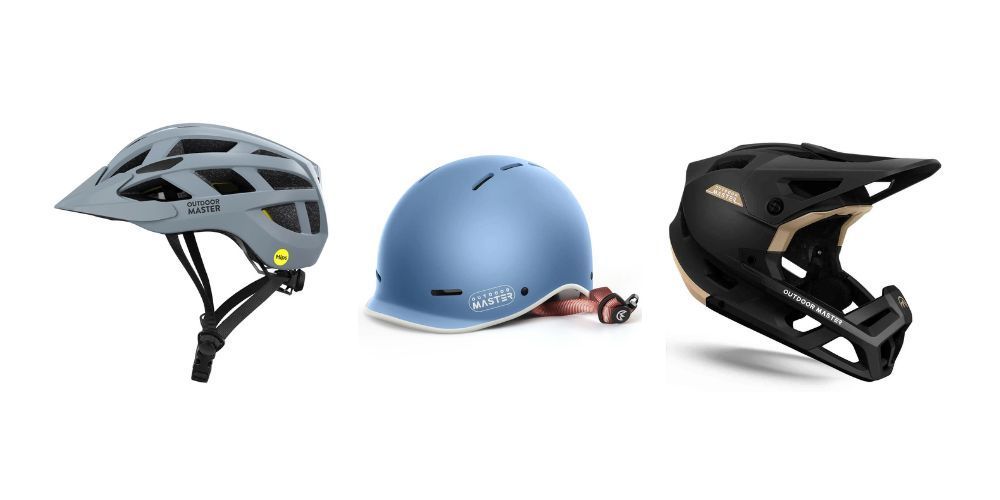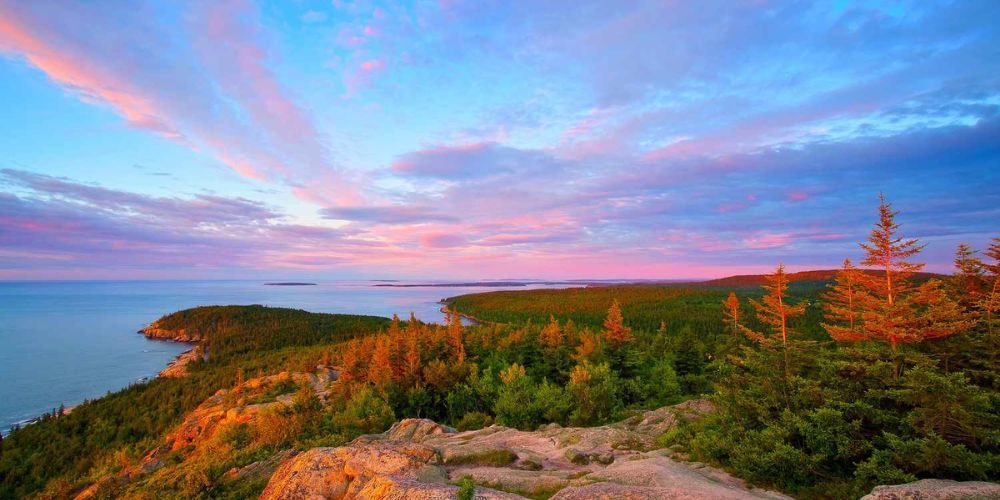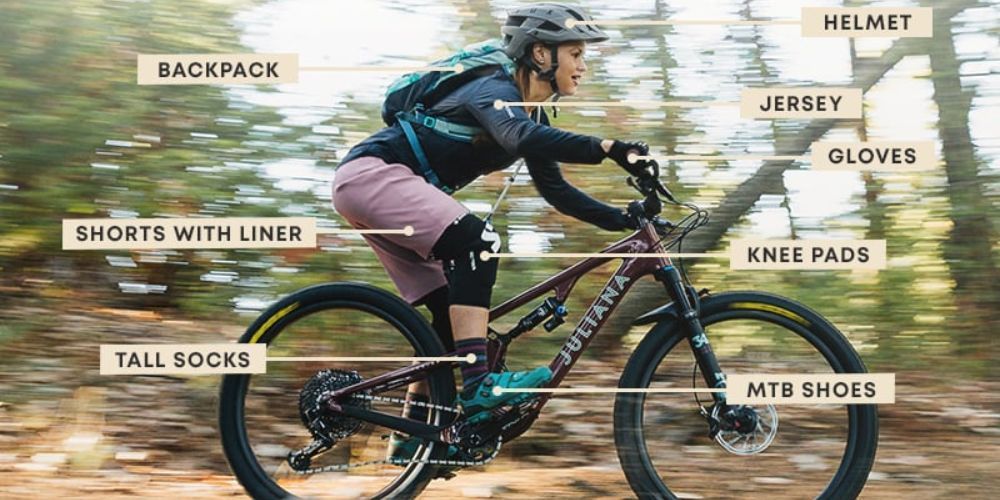William Flaiz is a lifelong athlete and outdoor enthusiast with a deep passion for adventure and sports. With over two decades of experience competing in marathons, triathlons, adventure races, and a wide range of recreational activities, William brings a wealth of knowledge to Sports and Nature Gear. Having explored 49 U.S. states and over 25 national parks, his extensive travels and hands-on experience with gear and gadgets provide readers with practical, expert advice for their own outdoor adventures. Whether it’s running, biking, kayaking, or hiking, William’s insights are invaluable to anyone looking to enhance their experience in the great outdoors. Read his full bio.
Mountain Biking: Exploring the Best Trails, Gear, and Tips for Your Adventure
Mountain biking is a thrilling journey on wheels. This sport allows you to explore scenic landscapes while challenging your fitness. With the right protective gear like a well-fitted helmet and sturdy elbow and knee pads, you boost your safety during potential falls and crashes. Even gloves are useful – they can offer needed protection during exciting rides through rough terrains. Next up, let's dive into details about essential biking gear that will prepare you for a safe, fun-filled adventure.
When getting started with mountain biking, it's essential to first secure a suitable mountain bike. Consider factors such as bike size, type of mountain biking (e.g., cross-country, trail, downhill), and wheel size. Additionally, investing in safety gear like a helmet is crucial for a safe and enjoyable experience on the trails.

Essential Gear for Mountain Biking
When venturing out to conquer thrilling mountain bike trails, a few essential pieces of gear should top your shopping list. Safety always comes first in any adventure sport, making it crucial to invest in the right protective gear.
Protective Gear
Mountain biking can be exhilarating, but it does come with its fair share of risks. Without a doubt, one of the most critical pieces of protective equipment is a well-fitting, CPSC-certified helmet. This will safeguard your head during falls and crashes, minimizing the risk of serious injury. Always ensure that the helmet fits snugly on your head to provide the best protection.
In addition to a reliable helmet, don't overlook the importance of shielding your extremities. Elbow and knee pads offer crucial protection for these vulnerable areas, reducing the impact of potential falls. Even experienced bikers can benefit from their protective features. And don't forget about gloves—they offer essential protection for your hands and enhance your grip on the handlebars.
Appropriate Clothing
Comfort is key during long mountain bike rides, and choosing the right clothing can make all the difference. Look for moisture-wicking, breathable materials that will keep you cool and dry as you tackle challenging trails. The last thing you want is to feel sweaty and uncomfortable as you navigate through rugged terrain.
Padded cycling shorts are another essential piece of clothing that can greatly enhance your riding experience. These specialized shorts are designed to minimize discomfort during longer rides and reduce the risk of chafing. Riding through bumpy trails without adequate padding can lead to soreness and irritation, putting a damper on your biking adventure.
Armed with the right protective gear and clothing, you're all set to tackle the mountain biking trails without compromising safety or comfort.
Exploring Virginia's Top Trails
Virginia is a treasure trove for those passionate about mountain biking, offering a diverse range of trails catering to all skill levels. For beginners, the Roanoke area beckons with scenic coastal trails providing the perfect introduction to the thrill of mountain biking. The gentle nature of these trails combined with stunning views ensures an enjoyable experience for new riders.
Roanoke, nestled in the picturesque Blue Ridge Mountains, offers trails such as the Carvins Cove, which has over 60 miles of trail network encompassing various difficulty levels, making it ideal for beginners looking to build up their skills. With long loops that are easily navigable, this area provides an immersive experience surrounded by lush greenery and captivating landscapes.
Bringing things closer to urban explorers, Richmond boasts an array of beginner-level trails in close proximity. The James River Park System provides an accessible entry point for those seeking a taste of mountain biking near the city. Its flowing singletrack trails wind through woodlands and along the river, combining nature with an urban twist.
Coastal Trails for Beginners
The advantage of starting on these beginner-friendly coastal trails is not only the beautiful scenery but also the opportunity to comfortably practice essential bike handling skills on forgiving terrains. These experiences lay a solid foundation for tackling more advanced trails in the future.
Moreover, some of these coastal trails offer various entry points and loop configurations, allowing beginners to tailor their rides according to their comfort level and gradually build up their endurance while being surrounded by Virginia's natural beauty.
Moving on from beginner-level trails, experienced riders yearning for a challenge can find a thrilling adventure in Massanutten Resort's Western Slope Trail System. Known for its intense mountain biking opportunities, this site features technical descents and rocky terrains that demand skill and precision from seasoned riders.
Expert-Level Mountain Trails
Sitting within the George Washington National Forest, this trail system showcases a variety of advanced routes highlighted by challenging downhill sections and intricate rock gardens. The technical nature of these trails demands proficiency in maneuvering across tumultuous landscapes and is sure to reward expert riders with an unmatched sense of accomplishment upon completion.
One notable component of these expert-level mountain trails is their integration with the natural surroundings - riders often find themselves engulfed by expansive forest canopies and breathtaking vistas that add an extra layer of immersion to their journey.
Virginia offers something truly special for every type of mountain biker - from scenic coastal trails ideal for beginners to rugged and technical terrains that push expert-level riders to their limits, ensuring there's never a shortage of adventure in this diverse state.
As we navigate through the myriad experiences presented by Virginia’s captivating biking destinations, let’s now set our sights on uncovering key techniques and skills necessary to conquer these diverse terrains.
Mountain Biking Skills and Techniques
So, you're all set to take on the challenge of riding through Virginia's awe-inspiring mountain biking trails, but you want to ensure you've got the right skills and techniques to make the most out of your experience. Let's break down some essential mountain biking skills that will help enhance your ride.
Bike Handling Skills
Mountain biking involves a delicate dance between your bike, the ground beneath you, and the path ahead. Developing essential bike handling skills like balance, braking, and control is crucial for confidently maneuvering through various trail conditions.
Balancing on your bike is more than just staying upright. It involves weight distribution and utilizing your body’s equilibrium to stay centered as you navigate uneven terrain. Meanwhile, mastering braking ensures that you can adapt to changing speeds on descents without losing control. Lastly, honing in on control helps you stay steady through bumps, dips, and turns.
Remember: A good grasp of these fundamental skills is akin to having a sturdy foundation; it allows you to confidently build upon more advanced techniques.
Climbing and Descending Techniques
Understanding efficient climbing techniques is a game-changer when it comes to conquering those uphill sections. These techniques involve body positioning, gear selection, and pedaling cadence which maximize power output while conserving energy.
When learning about descending techniques, one important factor is adjusting your body position based on the steepness and roughness of the trail. Proper weight distribution can reduce strain on your body and optimize stability as you hurtle down challenging descents.
By mastering these fundamental climbing and descending techniques, you'll not only conserve energy but also improve your speed and control over varied terrains.
Think of each new skill or technique you acquire as unlocking a new level in your mountain biking journey. Every skill set builds upon the other—balancing lets you tackle more technical terrain while efficient climbing paves the way for smoother descents.
With these foundational skills under your belt, you're better equipped to take on the diverse landscape of Virginia's mountain biking trails with confidence and excitement. Now, as we delve deeper into each skill set, remember these are building blocks for even more specialized techniques—so don't rush it!
As we've laid down the groundwork for mastering fundamental mountain biking skills, it's time to explore how to navigate the thrilling ups and downs of Virginia's mountain bike parks.
Navigating Mountain Bikeparks
Mountain biking parks are like treasure troves for riders looking to experience a variety of trails and landscapes in one place. The first step to discovering an exhilarating time in these parks is understanding the different trail markings. As you embark on your adventure, familiarize yourself with the trail difficulty ratings and directional signs displayed throughout the park. This way, you can confidently select routes that match your skill level and comfort zone.
Trail Difficulty Ratings and Directional Signs
Trail difficulty ratings typically follow a color-coded system, similar to skiing or rock climbing, to convey the level of challenge each trail offers. Green trails are usually beginner-level, marked by gentle slopes and minimal technical features. Intermediate trails are often colored blue, incorporating moderate inclines and technical elements to up the ante.
Advanced riders can look forward to red trails, which present steeper descents, tighter turns, and more demanding obstacles. Black or double black diamond trails are reserved for expert riders seeking extreme challenges with intense gradients and advanced technical features.
In addition to difficulty ratings, directional signs play a crucial role in guiding riders through the park. Pay close attention to these signs, as they provide essential information such as trail names, distances, and junctions. Following these indicators ensures you stay on track and avoid getting lost amidst the expansive network of trails.
Facilities for Enhanced Riding Experience
Beyond the thrill of conquering various trails, mountain bike parks present an array of facilities designed to enhance your riding experience. Many parks offer trail maps showcasing the network of routes along with key points of interest such as viewpoints and rest areas. These maps serve as invaluable tools for planning your ride and ensuring you don't miss out on any must-see locations.
Moreover, visitor centers within these parks can provide valuable resources ranging from current trail conditions to wildlife awareness programs. Make sure to stop by these centers to gather pertinent details about the park's offerings and receive any necessary guidance for a safe and enjoyable ride.
Apart from navigation aids and information centers, bike repair stations are scattered strategically around the park for quick adjustments or minor fixes should your bike require attention mid-ride. These stations often feature basic tools such as tire pumps and wrenches, offering peace of mind for riders prepared to tackle unforeseen mechanical hiccups.
Armed with an understanding of trail markings and an appreciation for park facilities, you're poised to explore mountain bike parks with confidence and make the most of every enthralling ride that comes your way.
Overcoming Mountain Biking Obstacles
As you become more adept at mountain biking, you'll inevitably encounter various obstacles that can initially appear daunting—rocks, roots, and drop-offs are all part of the challenge. However, with the right knowledge and techniques, you'll be equipped to handle them more confidently, enhancing your overall biking experience.
Trail Features: Tackling Common Obstacles
Mountain biking trails are full of surprises - from gnarly rocks to snaking roots and unexpected drop-offs. But navigating these features doesn't have to be as intimidating as it seems at first glance.
Approaching rocky sections or rooty terrain requires mastering skills such as wheel lifts and bunny hops. The wheel lift technique involves lifting the front and rear wheels to overcome roots and rocks without getting caught.
When encountering a significant obstacle like a rock or log, performing a controlled front wheel lift will allow you to clear it without losing speed or balance. Meanwhile, bunny hops enable you to spring over obstacles by compressing your bike's suspension and using your body's momentum to maintain control mid-air.
Think about it like this: when riding over roots that crisscross the trail like mischievous little elves trying to trip you up, having mastered these techniques will help you sail smoothly over them instead of getting jostled around.
Mental Preparation: Building Resilience
In addition to honing technical skills, mental preparation plays a pivotal role in conquering obstacles on the trail. Developing mental resilience is all about cultivating a positive mindset and being prepared for challenges that may lie ahead.
It's crucial to understand that each obstacle presents an opportunity for growth rather than an insurmountable roadblock. Viewing challenges through this lens helps build confidence in navigating technical terrain and facing tough sections head-on.
Think about this way: Every time you overcome an obstacle on the trail, whether it's a boulder or a steep drop-off, it's like leveling up in a video game—each success boosts your mental resilience.
Mastering these essential skills and mental tactics allows you to approach mountain biking with greater confidence, enabling you to tackle various obstacles while enhancing your overall riding experience.
Racing down trails with vigor and skill is exhilarating, but preparing for the competitive aspect demands a unique set of strategies and insights that we will explore in the next section.
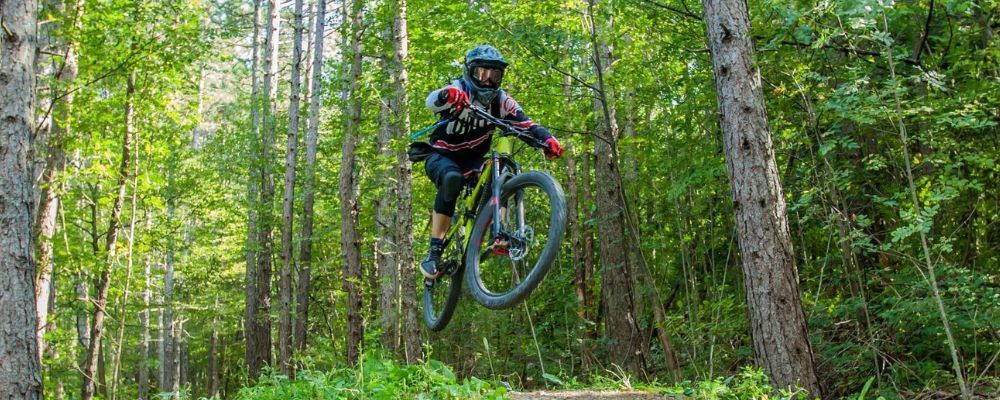
Preparing for Mountain Bike Races
When you decide to transition from recreational riding to racing, it can be both thrilling and intimidating. But like any adventure, it's about preparing and knowing what you need to do. So let's talk about a few important things to consider as you prepare for those adrenaline-pumping mountain bike races.
Race-Specific Training
Racing demands a different kind of riding than your usual weekend outing. Training with intention becomes vital when preparing for a race. It's not just about going out for fun; it's about building the endurance, speed, and technical skills needed to face the diverse challenges of a competitive race.
Race-specific training might include:
- Focusing on building endurance through longer rides or interval training.
- Working on improving speed through sprints and short bursts of high-intensity efforts.
- Devoting time to practicing technical skills such as cornering, climbing, and descents that mimic race conditions.
- Incorporating strength and flexibility exercises will also help prevent injuries and boost overall performance on race day.
Race Nutrition and Hydration
Nutrition and hydration are paramount in sustaining energy levels during a race. Endurance events like mountain bike races can be physically grueling, requiring consistent fueling to maintain stamina throughout the race.
Race nutrition strategies should be designed to provide a balance of carbohydrates for immediate energy, proteins for muscle repair, and fats for sustained energy. Finding the right balance can make all the difference in how well you're able to perform during the race.
Additionally, staying properly hydrated is crucial for optimal performance. Knowing how much water to drink and when to drink it can make or break your experience on race day. Dehydration can lead to fatigue, decreased focus, and even muscle cramps, so ensuring adequate hydration becomes an integral part of race preparation.
Understanding these aspects of race preparation and incorporating them into your training plan will significantly increase your chances of success on race day. So, take those extra miles, practice those sprints, and pay attention to your nutrition - because the more you prepare, the more rewarding your racing experience will be!
By applying these strategies, you'll be better equipped to take on the challenges of mountain bike racing with confidence and vigor. Happy racing!
AUTHOR
Nature's Playbook
As an Amazon Associate I earn from qualifying purchases.



